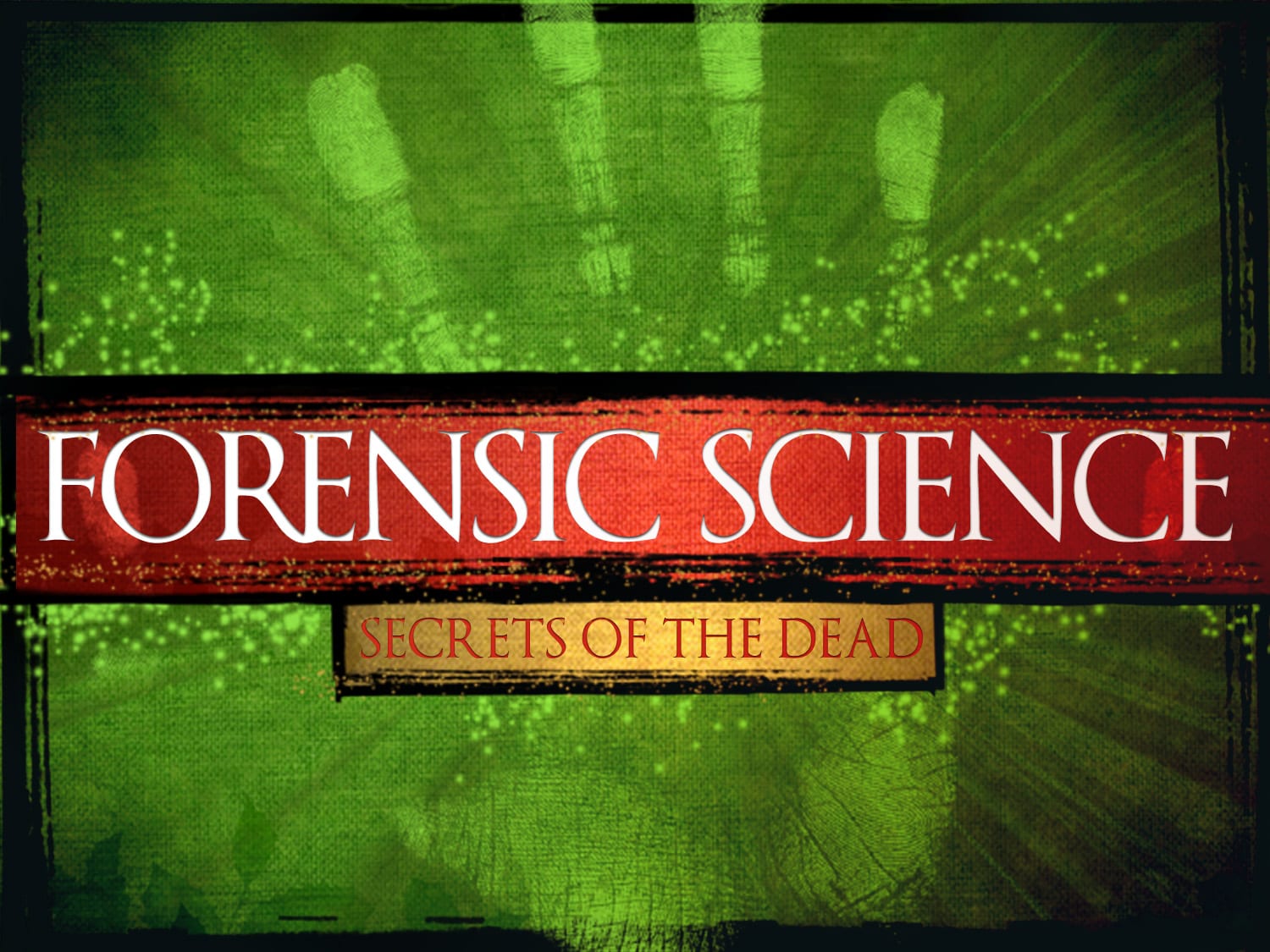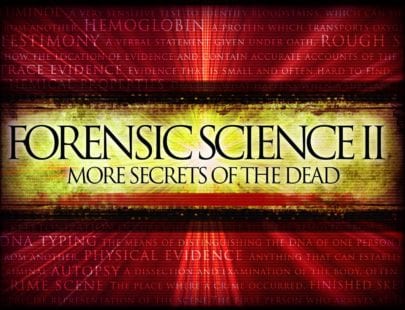
Forensic Science : Secrets of the Dead
Fingerprints. Blood spatters. Gunshot residue. If these things intrigue you rather than scare you, then forensic science may be for you. Explore the riveting job of crime scene analysis, and learn the techniques and practices applied during a crime scene investigation, including how clues and data are recorded and preserved. Discover how technology is applied to make discoveries and bring criminals to justice.
Units at a Glance
Unit 1: Introduction to Forensic Science
Blood, fingerprints, tire tracks, and trace evidence are used to catch the criminals in TV, but how do real life forensic scientists help identify suspects? In this unit, you will be introduced to forensic science. We will discuss what forensic science consists of and how the field developed through history. You will learn about some of the responsibilities of forensic scientists and about some of the specialty areas that forensic scientists may work in.
What will you learn in this unit?
- Learn about forensic science as a field of study.
- Discuss the history and development of the field of forensic science.
- Examine some of the responsibilities that forensic scientists have in their work.
- Investigate the relationship between forensic science and the criminal justice system.
- Explore some of the specialty areas within forensic science.
Unit 2: The Crime Scene
Once a crime has been committed, one of the first steps for the forensic scientist is the identification and collection of evidence. In this unit, you will discover some of the techniques and practices that forensic scientists and law enforcement officials use to identify evidence and collect that evidence in a way that maintains the integrity of the evidence. You will also learn about some of the different types of evidence that might be found at a crime scene and how the different types of evidence may best be handled.
What will you learn in this unit?
- Discover how a crime scene is secured.
- Examine the different ways in which a crime scene is recorded.
- Learn how forensic scientists and officers search a crime scene for evidence.
- Investigate how evidence is collected and packaged.
- Learn why evidence needs to be collected carefully and within legal guidelines.
Unit 3: Physical Evidence
In this unit, we will discuss the physical evidence found at crime scenes. In doing so, we will examine the different types of evidence that are used in a crime investigation and in court trials. We will also discuss how forensic scientists and investigators identify and collect evidence. Finally, we will look at some specific examples of physical evidence, including glass, soil, and impressions, to see how forensic scientists identify and analyze these types of evidence.
What will you learn in this unit?
- Learn about the different types of evidence.
- Examine the difference between individual and class characteristics and what they mean for crime investigations.
- Discuss how physical and chemical properties help forensic scientists compare samples.
- Investigate glass fragments and soil as physical evidence and what they can tell forensic scientists about a crime.
- Discuss how impressions, like footprints and tire tracks, are collected and analyzed.
Unit 4: Hair, Blood, and Fingerprints
In this unit, we will examine three potentially important types of physical evidence: hair, blood, and fingerprints. For each of these types of evidence, we will look at how the evidence may be collected and how the evidence might be tested. We will also discuss some of the challenges in examining these types of evidence and what we might learn from them.
What will you learn in this unit?
- Learn about the physical structures of hair, blood, and fingerprints.
- Discuss how DNA can be found in hair collected from crime scenes.
- Investigate how stains are tested to determine if they are blood and if they are human blood.
- Learn about the different types of fingerprints.
- Examine how fingerprints are discovered and collected at a crime scene.
Unit 5: Firearms and Tool Marks
In this unit, we will discuss the collection and analysis of firearm and tool evidence. We will learn some of the considerations in collecting this type of evidence. We will also examine what information forensic scientists can learn from evidence like firearms, bullets, gunpowder residue, and tool marks that are left at a crime scene. Finally, we will discuss under what conditions individual characteristics might be found on these types of evidence.
What will you learn in this unit?
- Discuss how firearm and bullet evidence is collected from a crime scene.
- Learn why bullets fired from a gun can contain unique markings and striations.
- Examine how investigators can estimate the distance between a gun and a shooting victim.
- Investigate what information forensic scientists can learn from tool marks.
- Discuss how forensic scientists can recover serial numbers from firearms and vehicles.
Unit 6: Human Remains
In this unit, you will learn more about how forensic scientists examine human remains and gain information from these remains. We will discuss some of the ways that forensic scientists try to determine the time of death for recovered human remains. We will also discuss how forensic scientists make use of the forensic autopsy to gain more information about a probable cause of death and mechanism of death. Finally, we will discuss what scientists can learn about the condition of bones found at a crime scene and some of the ongoing research by forensic scientists to learn more about rates of decomposition.
What will you learn in this unit?
- Investigate some of the ways that can help determine the time of death.
- Learn about some different ways that bodies may decompose.
- Discuss what forensic scientists can learn from a forensic autopsy.
- Examine what information can be gained from skeletal remains.
- Learn about ongoing research into decomposition rates.
Unit 7: DNA Evidence
In this unit, we will discuss what DNA is and how it is used as evidence in crime investigations. We will examine the basic components of DNA and learn what makes the DNA of each person unique. The unit will also discuss how biological evidence, like blood or hair samples, is preserved for DNA testing. Finally, we will examine the use of DNA evidence in court cases and some of the considerations that occur in these cases.
What will you learn in this unit?
- Learn about the properties of DNA.
- Examine how and why DNA can be used as an individual characteristic in forensic science.
- Investigate how biological evidence is best collected and preserved for DNA testing.
- Discuss what tests are used on biological evidence to retrieve DNA information.
- Examine some of the considerations in using DNA in court trials.
Unit 8: Arson and Explosion Evidence
In this unit, we will discuss how forensic science approaches crime scenes in which fire or explosions have occurred. In doing so, we will learn about the challenges that these crime scenes present in the collection of evidence, the methods used to determine the point of ignition, and how evidence is collected and preserved at arson scenes. We will also examine some of the different types of explosives and how explosive materials are collected and preserved.
What will you learn in this unit?
- Discuss what challenges arson and explosion crime scenes present in the collection, preservation, and analysis of evidence.
- Learn how investigators determine where a fire started and whether accelerants were used.
- Examine the different types of explosive materials that may be used in bombs and other explosions.
- Investigate how evidence at an arson scene is collected and tested.
- Discuss the methods used to test for explosive materials at crime scenes.
Required Materials
No additional materials are needed for this course.


